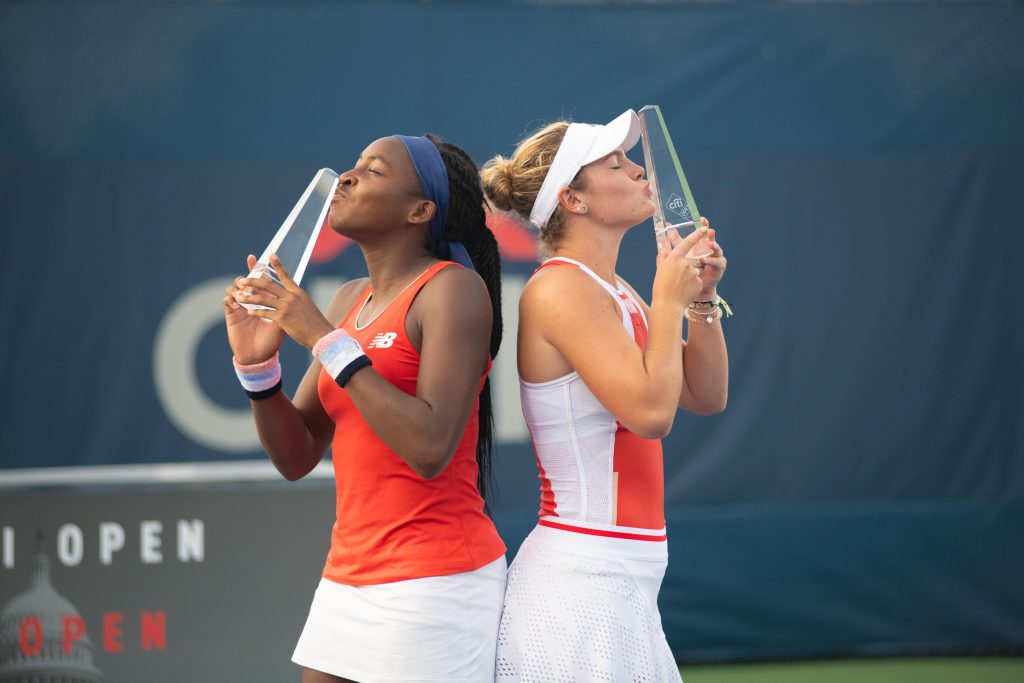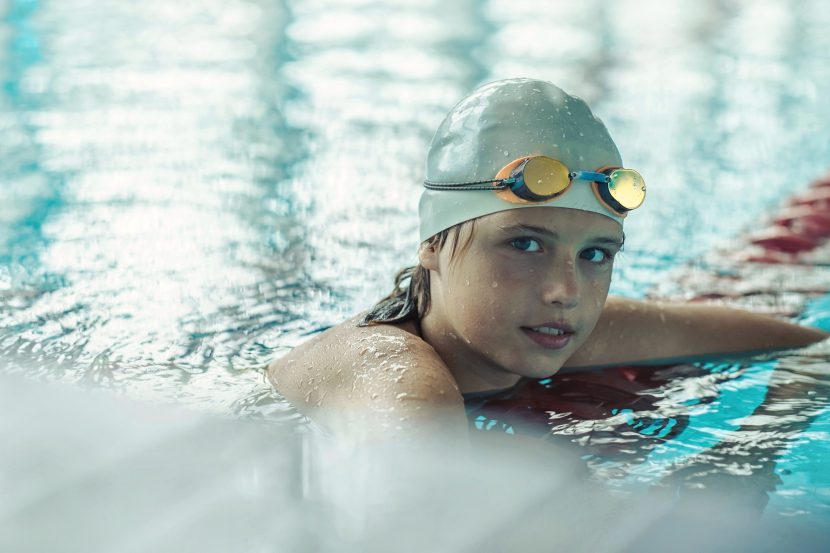The global sport industry was valued at nearly one billion US dollars in 2020, a figure that is projected to rise to five billion by 2026 (Clifford Chance, 2021). Companies at the heart of the industry are working to monetise every aspect of sport and this includes its most prized asset: talented young athletes. In particular, actors across an array of industries are utilising data analytics to generate and process children’s data (Clifford Chance, 2021).
The value of children’s personal data
A myriad of companies working in the sport industry are catalysing the digitization of sport and commercialization of player data, these include: media agencies, betting agencies, sports franchises and gaming developers among others (Westcott, 2020). These actors are taking advantage of cutting-edge machine learning technology to build comprehensive databases on athletes and their lives (Westcott, 2020). Predominantly, this data takes two forms: physical health information collected to analyse player performance; and personal information relating to players’ lives.
The monetary value of modern young athletes cannot be quantified or confined to the borders of the pitch, field, court or track on which they perform. Sports broadcasts are constantly growing, increasing publicity, fame and financial rewards through sponsorship, media deals and merchandise sales. Further, the boom in social media has provided an opportunity for corporations to monetise the day-to-day activities of young athletes, whose social media profiles provide a platform for significant advertising and endorsements.
A large proportion of this data is used to generate fan engagement and interest in budding superstars (Westcott, 2020). This makes seemingly personal data– such as a young athlete’s interests, lifestyle choices, family background and other characteristics –a valuable commodity to the commercial industry.
Associations are working to improve fan experiences and one of the main methods for achieving this goal is to draw connections between fans and athletes to create new streams of engagements (Westcott, 2020). This is evidenced both by the rise in ‘behind the scenes’ sporting content, such as Netflix’s Drive to Survive and Amazon Prime’s All or Nothing Series, as well as in the monetisation of athlete’s social media accounts.
The huge financial incentives of personal data are further evidenced in the emergence of global sporting superstars. Following her victory at the US Open last year, British teenage tennis sensation Emma Raducanu was set to make millions of dollars, not only from tournament prize money, but brand endorsements away from the sport (Timmins & Race, 2021).
This value was attributed to her marketability and, in particular, personal characteristics such as her ‘personality’ and the manner in which she conducted public interviews (Timmins & Race, 2021). Similarly, unpaid student athletes in the USA recently gained the opportunity to profit from the use of their name, image and likeness, allowing them to tap into the ten billion dollar ‘influencer’ marketing industry (Planos, 2020).
Data collection
In the modern age, data is generated from the moment a child opens an app or accesses the internet (ICO).As a result, corporations’ jobs are made easier by the fact that they can openly access publicly viewable information, such as social media profiles, media articles and published player profiles, to build up a character database of information.
In addition to accessing readily available data, sports teams, companies and agencies with a vested interest routinely process and analyse behavioural data to assess an athlete’s marketability and likelihood of success (Andrew, 2022). This management of data includes interventions from: data analytics companies, who sell performance data to third parties; betting companies, who used data from minors to set betting lines; and gaming companies, who use personal data to inform game design, among others (Andrew, 2021).
Children’s rights concerns
Article 3 of the United Nations Convention on the Rights of the Child (UNCRC) outlines the ‘best interests of the child’ should be a primary consideration in all decisions surrounding a child’s life (UNCRC, 1989). Recent global sporting events, however, point to dangerous levels of media attention on young athletes with limited consideration of the risks of data mismanagement. The Tokyo Olympics saw medalists as young as 12 years old, international football teams consistently host teenagers and U.S. women’s tennis has seen the emergence of 17- and 18-year-old stars (Andrew, 2022).

The risks for child development and welfare are plentiful. At a financial level, child data is used for the economic benefit of other industries and actors, preying on athlete’s successes without necessarily benefitting the athletes themselves. Aside from material disadvantages, unrestricted processing of child data carries great risks for mental health and development.
There is an absence of research on the ways in which early fame and publicity affect a child’s development in sport, however, it is clear that children are less equipped to assess the consequences of their data being used and processed (ICO). Once data has been obtained and processed, it is very difficult to undo these actions.
Protection mechanisms
While specific policies related to data protection in sport are sparse, there is an opportunity for regulators to draw on wider data provisions for inspiration. For example, Recital 38 of the United Kingdom’s General Data Protection Regulation (GDPR) outlines the need for child-specific data laws recognising that children are less aware of the risks and consequences of their data being processed (GDPR, 2016).
In general, the GDPR and other data protection policies work to protect personal data: that which relates to an identifiable individual. Under the regulation, children’s personal data must only be processed where there is a legal basis for doing so and there are legitimate interests which could be balanced against a child’s fundamental rights (GDPR, 2016). Considerations of legitimacy appear sparse in the context of sport, where it is often wrongly assumed that anything which financially benefits a child and their family is in their best interests.
Other data protection policies and regulations exist and can be formulated at multiple levels. In Ireland, a country in which the quarter of the population is considered children, the Data Protection Commission has produced guidelines on the processing of child data (Data Protection, 2021). These guidelines advocate, among other ideas, that transparency and communication with children is of the utmost importance. The United Kingdom’s International Commissioner’s Office (ICO) works to protect data privacy and has similarly called for a ‘privacy by default’ position in relation to the processing of child data, with open consultations recommended in instances where a child’s data is processed (ICO).
In the sporting context, this consultative and tentative approach falls at odds with the greed of commercialism. Nuggets of personal data carry huge financial weight in the context of gambling, for example, and the functioning of those industries is dependent on quick judgements and proactive decision-making. While the GDPR – and other data protection mechanisms – provide a framework for sporting bodies to draw on, it cannot simultaneously be the legislative framework and enforcement agency, as Member States must interpret and implement the legislation (Data Guidance, 2019).
Ways forward
Child data is often described as ‘new gold’ given its potential financial value (Data Protection, 2021). However, as the world becomes increasingly digitised, it is important that legislators and sporting regulatory bodies work to protect children within, rather than from, the digital world (ICO). It is counterproductive and unrealistic to push athletic children away from digital environments such as social media given their omnipresence. Instead, regulators should work to:
- Analyse the ways in which data is being collected from children and processed in the sporting industry – this would help develop communication lines and links between seemingly separate industries to enable the joint development of guidelines and policies.
- Establish adequate policies to protect the best interests of the child and mandate an assessment of the ethical validity of data collection and processing.
- Normalise and mandate communications between children and their data processors, respecting children’s autonomy and right to be heard on matters concerning their wellbeing.
- Ensure firm sanctions and remedies exist to adequately punish offenders (rather than trivial fines) and remedy children who have been wronged (both financially and through psychosocial support).

At Humanium, we seek to protect children’s rights and raise awareness on the abuse of these children. It is thus crucial that we speak and discuss the conditions in which youth athletes are practicing their sports. In our projects, we have advocated for the creation of resources and activities that help children grow as individuals, a mission which prioritizes the health and wellbeing of the child. In Palestine, for example, we worked on the rehabilitation of a playground for children from the refugee camp of Deheise, which allowed children access to a secure playground with sport equipment.
Written by Vanessa Cezarita Cordeiro
References:
ICO. (n.d). “Children’s code; Additional resources.” Retrieved from Information Commissioner’s Office, accessed 10 May 2022.
ICO. (n.d). “What should our general approach to processing children’s personal data be?” Retrieved from Information Commissioner’s Office, accessed 10 May 2022.
Westcott, K., & Jarvis, D. (2020, December 7). “The hyperquantified athlete: Technology, measurement and the business of sports.” Retrieved from Deloitte, accessed 10 May 2022.


